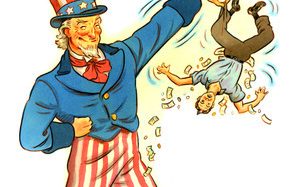U.S. Supreme Court Justices relied explicitly on Independence Institute briefs three times this year. In addition, one Justice awarded Rob Natelson, our Senior Fellow in Constitutional Jurisprudence, his 20th Supreme Court citation.
In Espinoza v. Montana Department of Revenue, SCOTUS (which stands for “Supreme Court of the United States”) held that the First Amendment bars states with public/private school choice programs from discriminating against religious schools. Specifically, the Court voided a section in the Montana constitution denying aid to “sectarian” schools.
The Colorado Constitution has a similar provision, and in 2015 the Colorado state supreme court—over II’s objection—used it to strike down a Douglas County school choice program. But the Espinoza ruling confirms that the Colorado court’s decision was wrong and the Independence Institute was right.
II submitted a “friend of the court” brief in the Espinoza case. In an opinion agreeing with his colleagues, Justice Samuel Alito referred to this brief twice. Rob Natelson was the brief’s principal author and researcher and II Research Director Dave Kopel edited and submitted it.
In the same opinion, Justice Alito separately cited Rob’s article on the same subject.
A few days later Justice Elena Kagan relied on another Independence Institute brief. In her opinion for the court in Chiafolo v. Washington, she cited it to show that the Founders expected members of the Electoral College to use their independent judgment when voting for president and vice-president. Rob was the principal author of this brief as well, and Dave the principal editor and submitter.
While apparently agreeing with II’s historical findings, however, Justice Kagan decided not to interpret the Constitution according to the Founders’ understanding. She used another interpretive method instead.
SCOTUS Justices have relied on II briefs in previous cases. But it is the first time they have given credit to II by name.
This is the 20th time since 2013 that SCOTUS justices have cited Rob’s published research by name. When Rob was a law professor, the leftists who controlled his law school downplayed—and sometimes actively tried to suppress—his constitutional law activity. In 2010, however, after 25 years in academia, he left to work on-site with II. Soon thereafter the Institute began to promote his scholarship, and eventually Supreme Court Justices began to notice it.
In addition to Supreme Court citations, Rob’s writings now have been mentioned by several other federal judges and by the highest courts of at least 16 states.








